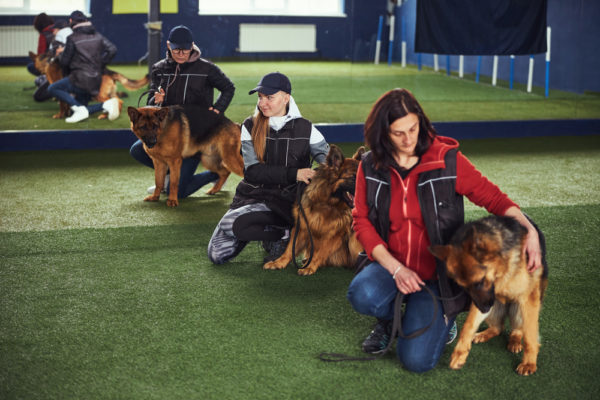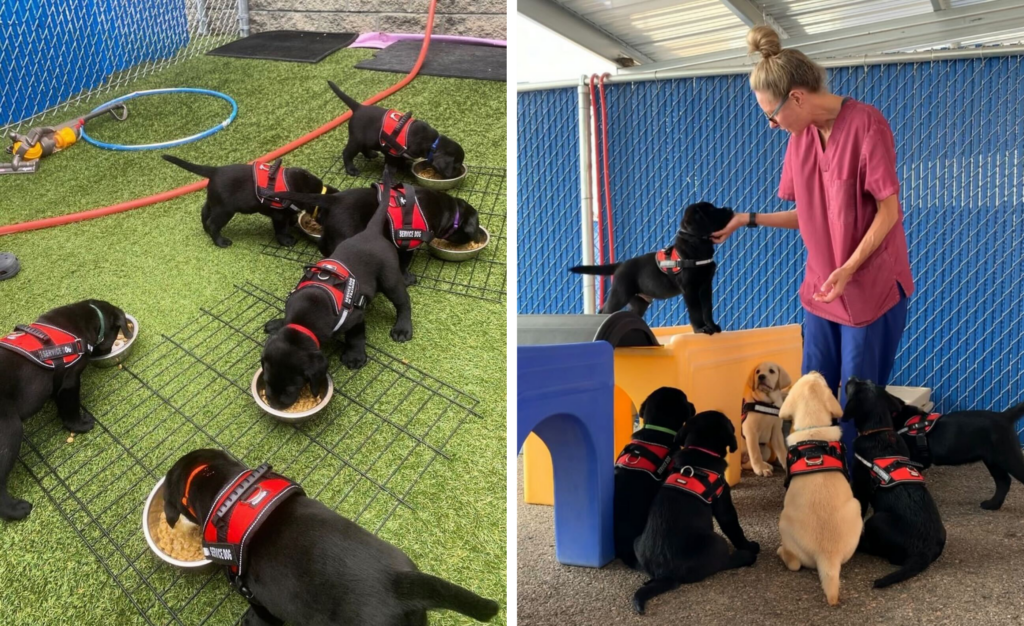Effective Puppy Training to Help Your Pet Grow into a Well-Behaved Adult Dog
Effective Puppy Training to Help Your Pet Grow into a Well-Behaved Adult Dog
Blog Article
Beginner's Guide to Successful Canine Training in your home
Effectively educating a dog in your home calls for a nuanced understanding of canine actions and reliable communication strategies. Developing clear training objectives, utilizing top notch incentives, and maintaining consistency throughout family members are essential components. Incorporating training into daily routines can improve both interaction and retention. Nonetheless, numerous novice trainers experience difficulties that may hinder development. To browse these intricacies efficiently, it's important to explore several essential elements that can transform your method and result in a harmonious relationship with your animal. What fundamental principles should every novice grasp to make certain success?
Comprehending Dog Actions
Comprehending canine actions is crucial for effective training and fostering a harmonious connection between people and their canine buddies - Puppy Training. Dogs communicate largely with body movement, vocalizations, and faces, making it essential for proprietors to interpret these signals properly. Acknowledging behaviors such as tail wagging, roaring, or cring can give insights right into a canine's emotion and purposes
Moreover, comprehending the all-natural instincts of pet dogs, such as their pack mindset, aids proprietors develop management functions within the home. This is crucial for producing a structured setting where dogs really feel safe and secure and are much more receptive to training. Pets are likewise affected by their socializing experiences; early exposure to different atmospheres, individuals, and other animals can considerably shape their actions later on in life.
Typical behavior issues, such as hostility, anxiousness, or too much barking, frequently originate from misunderstandings or unmet demands. Observing and attending to these issues without delay can avoid rise and make sure a favorable training experience. By fostering a deep understanding of canine actions, owners can customize their training approaches to match their canine buddies, inevitably bring about a contented and well-behaved pet dog.

Necessary Educating Tools
A well-appointed training area can substantially enhance the effectiveness of canine training in the house. Important training devices make sure that both the fitness instructor and the canine can participate in effective sessions that cultivate discovering and bonding.

Purchasing a durable leash and a comfortable, well-fitting collar or harness is important for security and control. These tools assist establish borders and guarantee the dog stays safe throughout training. Furthermore, an assigned training location, without distractions, help focus for both the canine and the trainer.
Training aids such as training pads, cones, or agility devices can also boost the experience by introducing selection and difficulties. Having a notebook or digital app for tracking development can be important, allowing you to note successes browse around here and areas for renovation. Using these important devices will certainly create a favorable training atmosphere and lay the foundation for efficient knowing.
Developing a Training Regimen
Establishing a regular training routine is vital for effective pet training in the house. A well-structured regular not only aids in reinforcing desired actions but additionally gives your pet dog with a complacency and predictability. To produce an efficient training routine, begin by identifying certain training goals, such as fundamental commands, leash walking, or house-breaking.
Select an assigned time each day for training sessions, ideally when your pet dog is receptive and alert. Sessions must be short, roughly 5 to 15 minutes, to preserve focus and prevent tiredness. Consistency in timing and atmosphere will certainly enhance your pet dog's understanding experience.
Incorporate training right into day-to-day tasks to enhance abilities. Practice commands during walks or mealtime, which incorporates finding out right into all-natural regimens. Furthermore, continue to be flexible and readjust the routine as required, accommodating your canine's power degrees and state of mind.
Positive Support Methods

When carrying out favorable reinforcement, it is vital to select incentives that are motivating for your pet. High-value treats, such as little pieces of chicken or cheese, can be especially reliable throughout training sessions. Furthermore, varying the incentives can maintain your canine's interest and interest.
Beginning with simple commands, like "sit" or "stay," and progressively development to much more complex tasks. Uniformity is vital; guarantee that all relative make use of the same commands and incentive get redirected here systems to prevent confusion.
Moreover, it is important to continue to be client and stay clear of stress. Canines, like human beings, learn at their own rate. By cultivating a supportive training atmosphere through positive support, you can enhance your dog's learning experience while strengthening the bond in between you and your hairy buddy, laying the foundation for effective training end results.
Usual Educating Challenges
While training a canine at home can be a satisfying experience, it often comes with a set of common obstacles that can test both persistence and consistency. One common issue is disturbance. Pets might end up being conveniently sidetracked by sounds, movements, and even scents in their atmosphere, making it challenging to maintain their emphasis throughout training sessions.
An additional challenge is variance in commands and support. It can prevent and perplex the pet development if household members use various cues or benefits. Developing a unified method is necessary for reliable communication.
In addition, pets can experience frustration or anxiety, especially if they do not recognize what is expected of them. This can result in unfavorable habits, such as barking or chewing.
Lastly, the timing of support is essential. Postponed incentives can lessen the efficiency of favorable support, as dogs might stop working to attach the actions with the incentive.
Getting over these difficulties calls for commitment, clear interaction, and an organized training plan - Puppy Training. Acknowledging and attending to these common obstacles will certainly lead the way for a more pleasurable and successful training experience in the house
Final Thought
In verdict, successful pet dog training at home demands an extensive understanding of canine behavior and effective interaction approaches. By developing clear training goals and utilizing high-grade deals with alongside positive reinforcement, the training process ends up being a lot more gratifying for both the dog and the instructor.
Developing a consistent training regimen is necessary for efficient dog training at home.Favorable reinforcement strategies are fundamental to reliable pet training, advertising desired habits via rewards instead than punishment. By cultivating a helpful training atmosphere via positive reinforcement, you can improve your pet's discovering experience while strengthening the bond in between you and your furry buddy, laying the foundation for effective training end results.
In verdict, effective pet training at home requires an extensive understanding of canine habits and reliable interaction approaches. By establishing clear training objectives and making use of premium treats together with positive reinforcement, the training process ends up being extra fulfilling for both the canine and the instructor.
Report this page